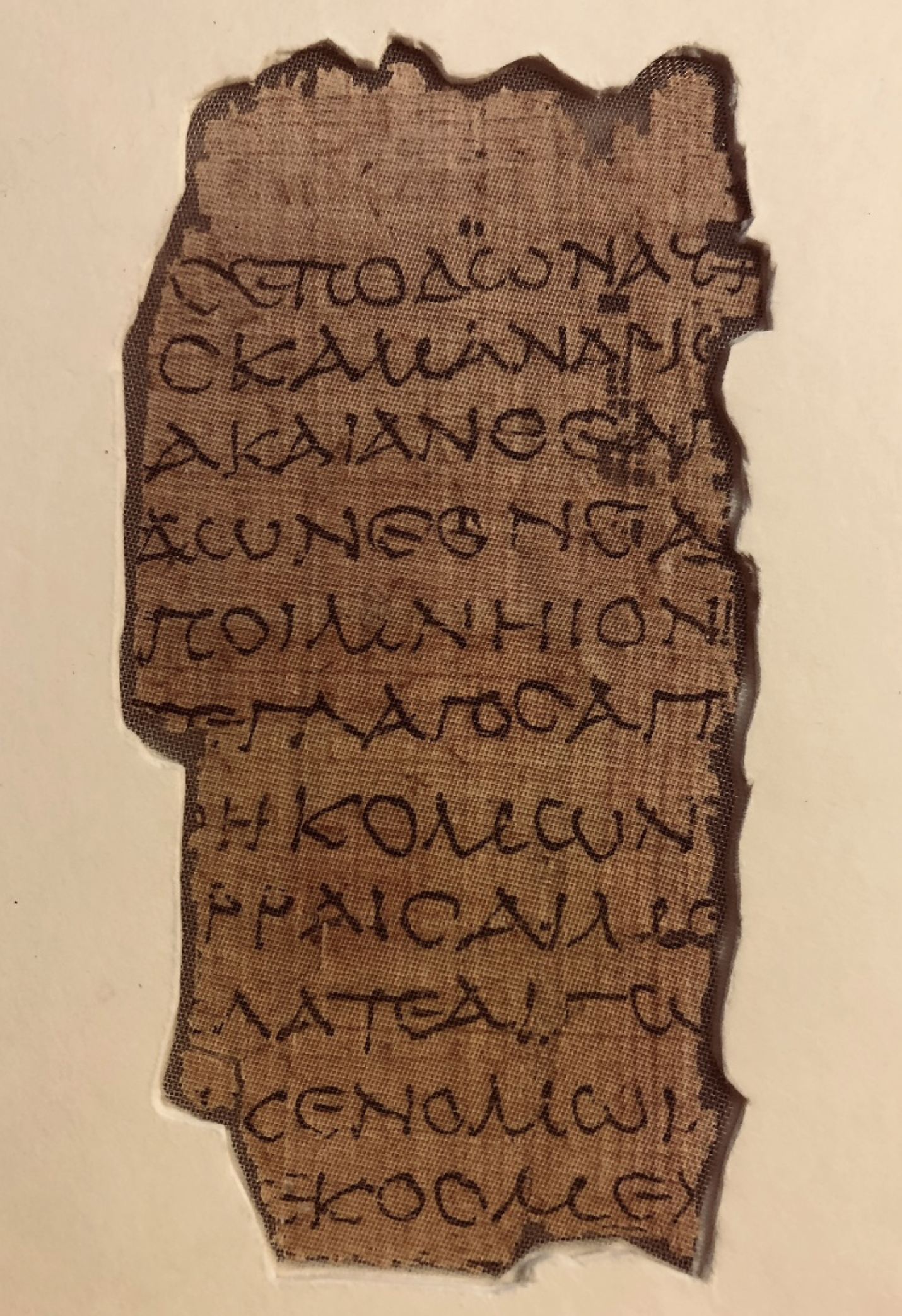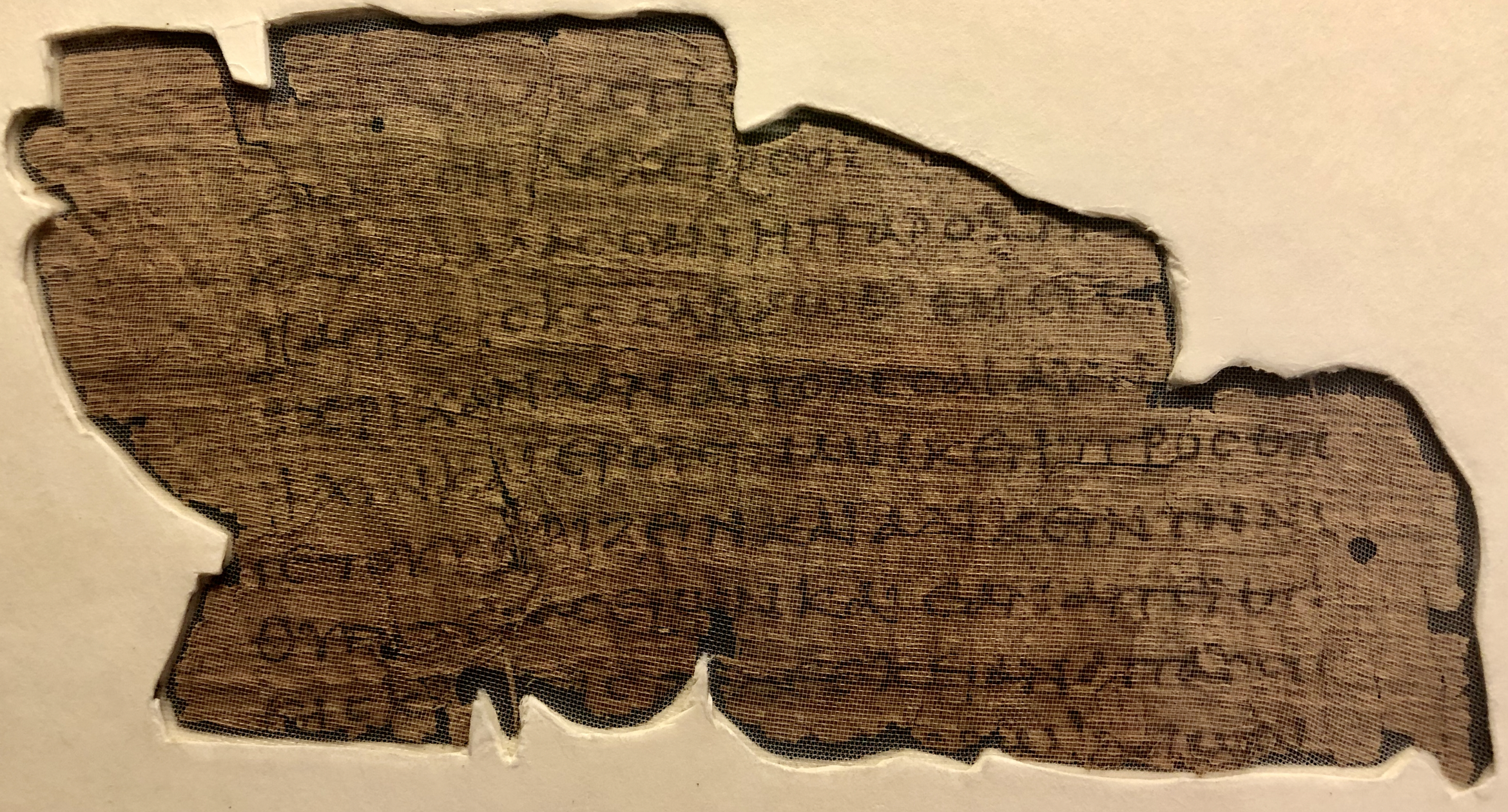This is a guest post by John Hessler, Curator of the Jay I. Kislak Collection of the Archaeology and History of Early Americas at the Library of Congress.
As a linguist obsessed with the earliest history of writing, I am used to dealing in fragments. A shattered chunk of engraved stone, a handful of shards of painted pottery, a surviving blot of ink on vellum – sometimes these are the only evidence we have of long-lost scripts and languages. Small and insignificant as they may seem, they give us glimpses into great works of literature and poetry that we will never really know.
You find such fragments in the world’s great libraries all the time. Pulled from the bindings of books, unearthed from archaeological digs, donated by antiquarians, they can, despite their incomplete nature, become critical pieces for reassembling puzzles of the ancient world.
Medieval manuscript fragments found in the binding of a Portolan Atlas by Placido Oliva.
Geography and Map Division, Library of Congress.
Historian and bibliographer Seymour de Ricci, born in 1881, knew this. Early in his career, he was a scholar of ancient Greek and wrote about the graffiti found in ancient Egyptian tombs – some of the world’s ultimate literary fragments. Later, he turned his attention to medieval manuscripts and tapestries. After many years of research conducted in places like the Library of Congress, he produced the landmark “Census of Medieval and Renaissance Manuscripts in the United States and Canada,” in 1935.
He also donated a small collection of rare papyrus fragments to the Library. They include pieces from two of the earliest works of literature known in the West: “The Iliad,” by Homer; and the book of Isaiah in the Bible.
The fragment of Homer that de Ricci collected is a section from Book II of “The Iliad,” which tells the tale of the Trojan War. This masterpiece of storytelling was, throughout the Greek world, told orally at first, and was later set down on papyrus, the medium of choice for ancient Egyptian, Greek and Middle Eastern scribes. The oldest complete manuscript dates from the 10th century, so any fragments from earlier versions help trace the poem’s history — and de Ricci’s fragment is from nearly 1,000 years earlier.

Fragment of Homer’s Iliad from the Seymour de Ricci Collection. Rare Book and Special Collections, Library of Congress.
It’s from a section of the poem in which Homer begins to explain the details of the Greek war on Troy. He introduces Odysseus and Nestor, who support the main movers and shakers in the story, Achilles and Agamemnon. The fragment is the center part of the text from lines 466-477 (approximately shown in red). The complete section, translated here, narrates the drama of the warring forces gathering on the plains outside Troy:
So tribe on tribe, pouring out of the ships and shelters, marched across the Scamander plain and the earth shook, tremendous thunder from the trampling feet of men and horses drawing into position down under the Scamander meadow flats breaking into flower—men by the thousands, numberless as the leaves and seedlings that flower forth in the spring.
The armies massing, crowding thick and fast as swarms of flies seething over the shepherd’s stalls in the first spring days when the buckets flood with milk—so many long-haired Achaeans swarmed across the plain to confront the Trojans, fired to smash their lines. These men who are as goatherds among the wide flocks easily separate them in order as they take to the pasture, thus the leaders separated them this way and that toward the encounter, and among the powerful Agamemnon…
The scribe who wrote de Ricci’s fragment spelled several words differently than we see in other versions, and inserted an additional word here and there. This can be expected in a poem that was repeated orally for centuries, and then written down by different scribes in different places. Fragments like these let scholars explore these differences and see what they might mean.
The Isaiah fragment of de Ricci is from the 4th century, or about 1,200 years after the original was written, perhaps by Isaiah himself. The fragment has writing on both sides of the papyrus, from Isaiah 23:4-7 and 10-13. It is a small part of a prophecy about the cities of Tyre and Sidon. The full section reads:
Be ashamed, Sidon, fortress on the sea, for the sea has spoken, “I have not been in labor, nor given birth, nor raised young men, nor reared young women.” When the report reaches Egypt they shall be in anguish at the report about Tyre. Pass over to Tarshish, wail, you who dwell on the coast! Is this your exultant city, whose origin is from old, whose feet have taken her to dwell in distant lands?
Any ancient record of the Bible is important, and this one allows us to conclude that the fragment was once part of a codex or book. Note the round dot, the hole in the margin, which was once used to sew the sheet into a binding.


De Ricci fragment, Book of Isaiah, from the early 4th century. Rare Book and Special Collections. Library of Congress.
History is the story of fragments—what survives and what does not. For many manuscripts, for which there are no surviving complete copies, or whose history we know little, fragments are sometimes all we have to go by. For texts like these, and for linguists and scholars like de Ricci and myself, no piece is too small to save.
Subscribe to the blog— it’s free! — and the largest library in world history will send cool stories straight to your inbox.

















